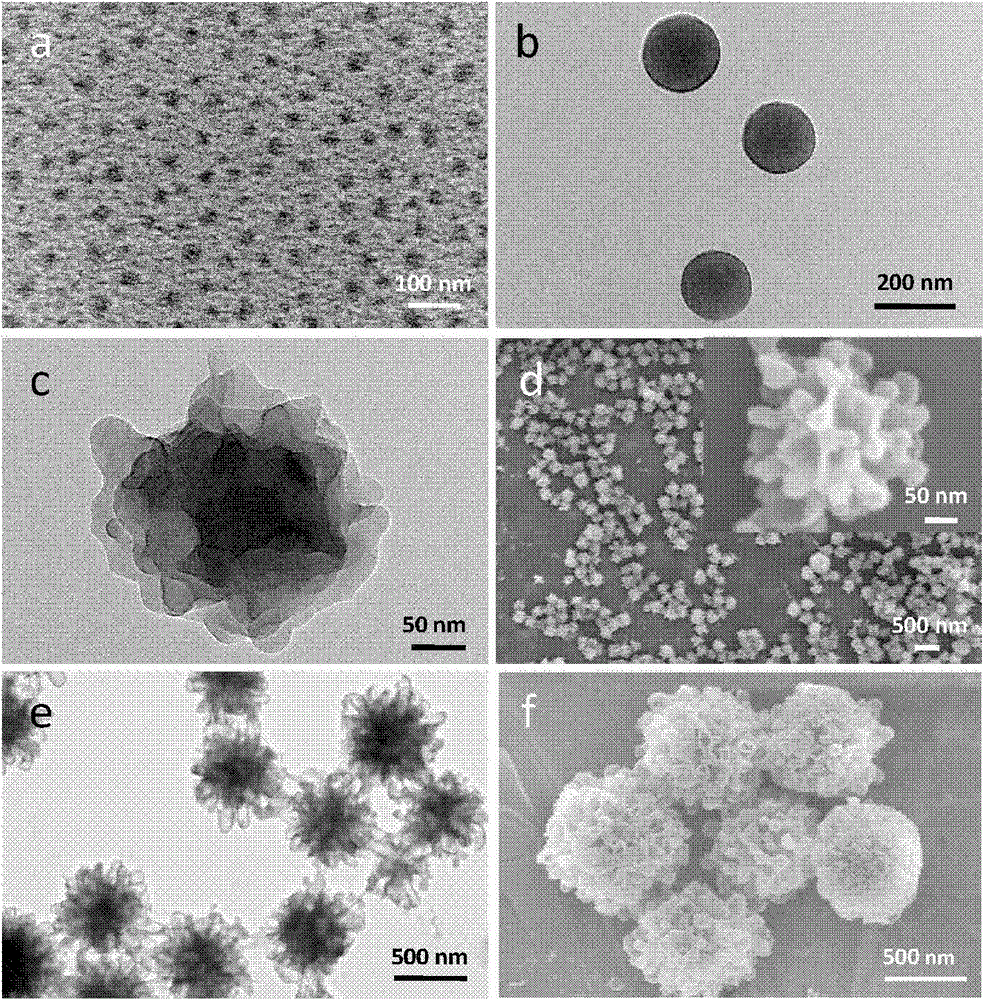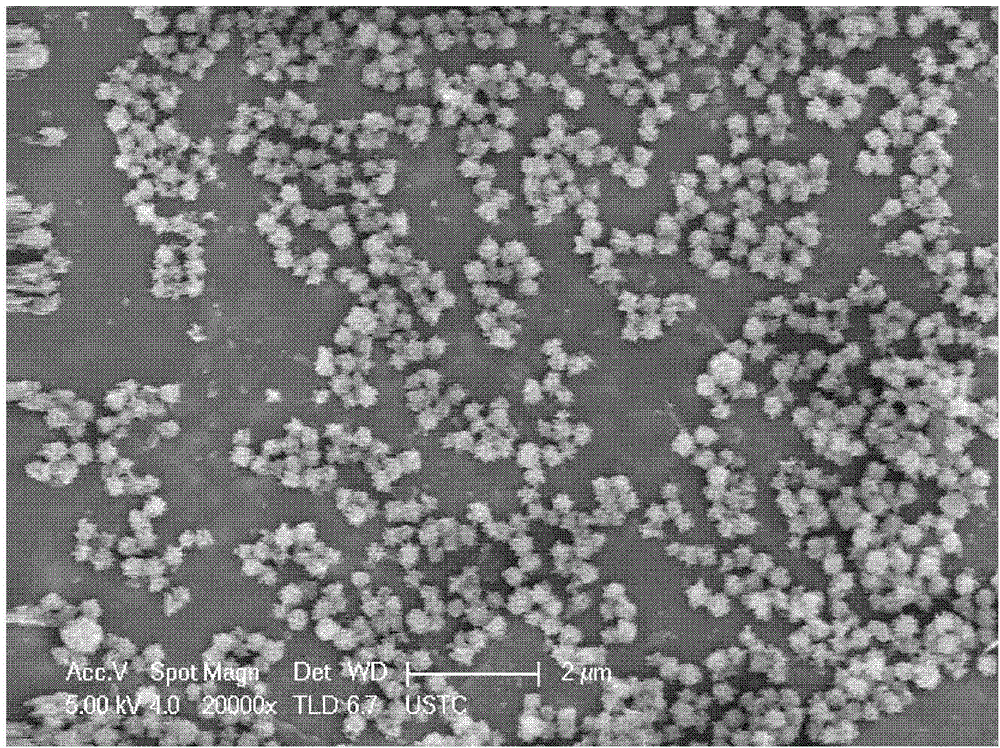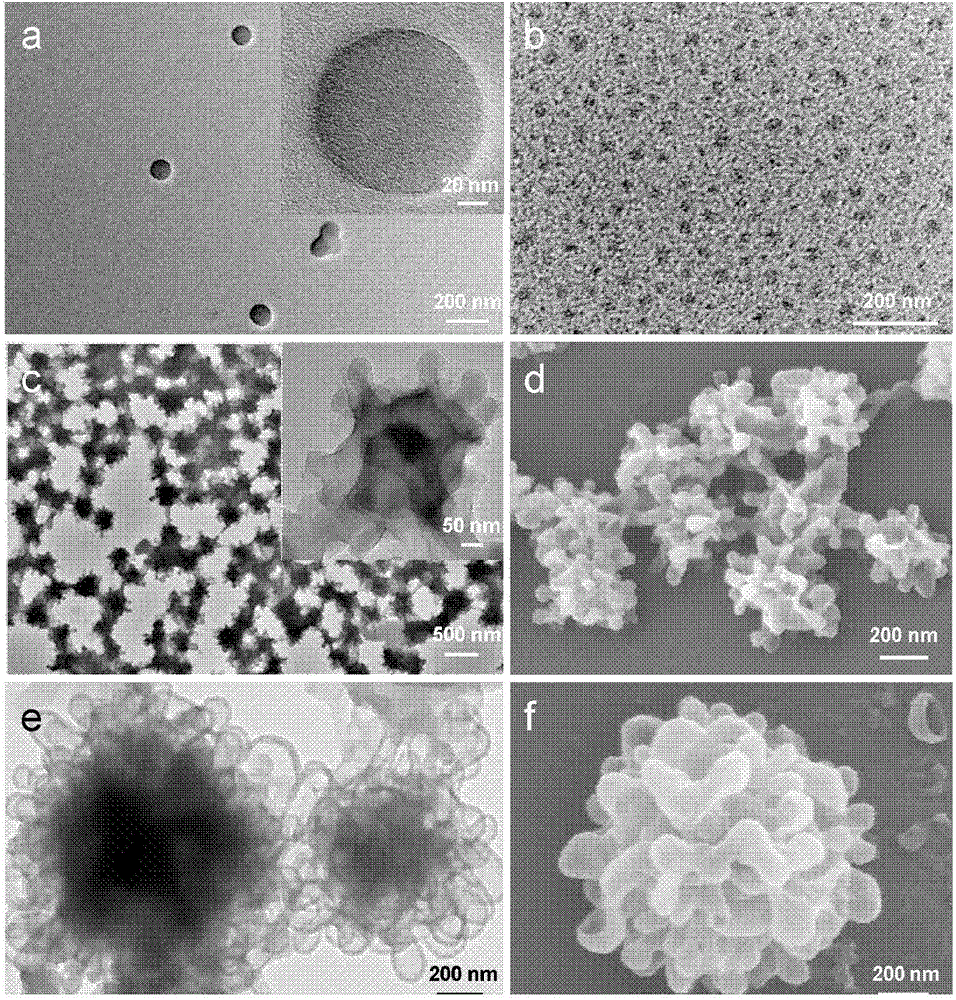Method for preparing nano particles of camptothecin polymeric prodrug amphipathic molecules as well as product and application of nano particles
A technology of amphiphilic molecules and nanoparticles, applied in the field of medicine, can solve problems such as poor solubility and stability
- Summary
- Abstract
- Description
- Claims
- Application Information
AI Technical Summary
Problems solved by technology
Method used
Image
Examples
preparation example Construction
[0075] (4) Preparation of flower-like composite vesicle nanostructures: first dissolve the polymeric prodrug amphiphilic molecule PEG-b-PCPTM in a co-solvent. The co-solvent is pure 1,4-dioxane or a mixed solvent of 1,4-dioxane and other solvents with a total content of not less than 70%. The concentration of the amphiphilic molecule of the polymerized prodrug ranges from 0.1 mg / mL to 1000 mg / mL, and then 4 to 1000 times the volume of water is added, and the total time of dripping water is more than 10 hours. Then, the organic solvent was removed by dialysis. The prepared particles have many small vesicle microstructures and interpenetrating interlaced cavities microstructures. The diameter range of composite vesicle nanoparticles is 500-3000nm.
[0076] E.g, figure 1 PEG based on polymeric prodrug amphiphilic molecule 45 -b-PCPTM 52 (The subscript number "45" represents the degree of polymerization of PEG, and "52" represents the degree of polymerization of CPTM) Four typical ...
Embodiment 1
[0082] Example 1: Reductive response to camptothecin polymerization prodrug amphiphilic molecule PEG 45 -b-PCPTM 52 preparation
[0083] The polyethylene glycol macromolecular chain transfer agent (46mg, 0.02mmol), CPTM (632mg, 1.06mmol) and AIBN (0.33mg, 0.002mmol), 6mL 1,4-dioxane and dimethyl sulfoxide (volume The ratio=1:1) is added to the ampoule to dissolve the mixture. Place the ampoule in liquid nitrogen and freeze it with an oil pump, then seal the ampoule, return to room temperature to melt the reaction mixture, and then freeze and pump the air. The freeze-thaw cycle is repeated three times, and then sealed under vacuum. After stirring the reaction at ℃ for 24h, the polymerization reaction was terminated with liquid nitrogen, the reaction flask was opened, the reaction mixture was precipitated in ether, centrifuged, and then dissolved in chloroform, and AIBN (20 times the equivalent of the macromolecular chain transfer agent) was added at 60℃ The reaction was stirred f...
Embodiment 2
[0087] As described in Example 1, the difference is that the dosage of CPTM is 291.7 mg, 331.9 mg of polymerized prodrug amphiphilic molecule is obtained, and the yield is 98.3%. According to 1 According to H NMR analysis, the degree of polymerization of CPTM is 24, which is expressed as PEG 45 -b-PCPTM 24 , Number average molecular weight M n =15900, the drug load is 50.3%.
PUM
| Property | Measurement | Unit |
|---|---|---|
| diameter | aaaaa | aaaaa |
| diameter | aaaaa | aaaaa |
| diameter | aaaaa | aaaaa |
Abstract
Description
Claims
Application Information
 Login to View More
Login to View More - R&D
- Intellectual Property
- Life Sciences
- Materials
- Tech Scout
- Unparalleled Data Quality
- Higher Quality Content
- 60% Fewer Hallucinations
Browse by: Latest US Patents, China's latest patents, Technical Efficacy Thesaurus, Application Domain, Technology Topic, Popular Technical Reports.
© 2025 PatSnap. All rights reserved.Legal|Privacy policy|Modern Slavery Act Transparency Statement|Sitemap|About US| Contact US: help@patsnap.com



